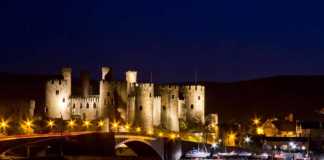Pakistan is a multi-ethnic country in South Asia bordered by Afghanistan to the west, Iran to the southwest, China to the northeast, and India to the east. Pakistan has been governed by different rulers throughout history, from the nature-loving Mughal Emperors to the British colonialists. The culture, food, and religion are influenced by a range of ethnic groups, such as Punjabis, Kashmiris, Sindhis, Muhajirs (the descendants of Indian immigrants) and tribal communities. The country has fantastic archaeological sites, mausoleums, lush green landscapes and impressive mountain peaks, so there’s a varied range of landmarks in Pakistan to see. From mosques and forts to national parks, these Pakistan landmarks will give you a taste of the country’s architectural, artistic, and natural beauty.
Contents
- Pakistan Landmarks
- Top Tours
- 20 Landmarks in Pakistan
- 1- Badshahi Mosque
- 2- Faisal Mosque
- 3- Deosai National Park
- 4- Ranikot Fort
- 5- Baltit Fort
- 6- Khewra Salt Mine
- 7- Khaplu Palace
- 8- Faisalabad Clock Tower
- 9- Pakistan Monument
- 10- Bahadurabad Chowrangi
- 11- Minar-e-Pakistan
- 12- Shangrila Resort
- 13- Mohenjo-Daro
- 14- Noor Mahal
- 15- Wazir Khan Mosque
- 16- Lahore Fort
- 17- Attabad Lake
- 18- Frere Hall
- 19- Katas Raj Temples
- 20- Empress Market
Pakistan Landmarks
Top Tours
- 5 Day Group Tour Of Pakistan – see the best of the country on an organised tour.
- Southern Pakistan Tour – UNESCO World Heritage Trail.
- Trip to Thar Desert and Nagarparkar – an incredible experience
20 Landmarks in Pakistan
1- Badshahi Mosque
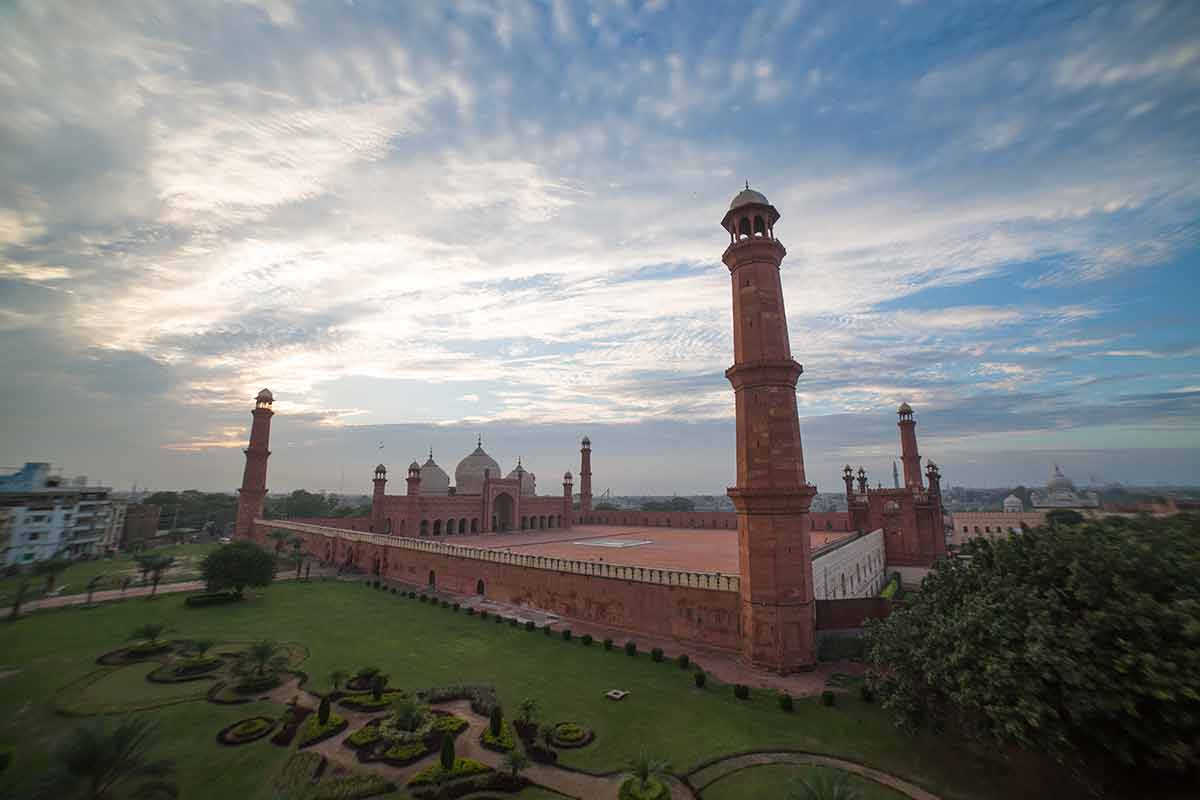
Commissioned by the Mughal Emperor Aurangzeb Alamgir, Badshahi Mosque is one of the most iconic landmarks in Lahore.
It is the second-largest mosque in Pakistan and fifth in the world, covering an area of 276,010 sq ft (25642 sqm).
This UNESCO World Heritage Site, built in 1674, has monumental gateways, four three-story minarets made of red sandstone, three massive marble domes, and an open courtyard said to accommodate up to 100,000 worshippers.
Above the main gate is a small gallery that contains relics attributed to Prophet Muhammad (PBUH).
Near the entrance is the tomb of Dr Muhammad Iqbal, an eminent poet and the founder of the Pakistan Movement.
Also, near the entrance lies the tomb of Sir Sikandar Hayat Khan, who was responsible for the preservation and restoration of the mosque.
2- Faisal Mosque
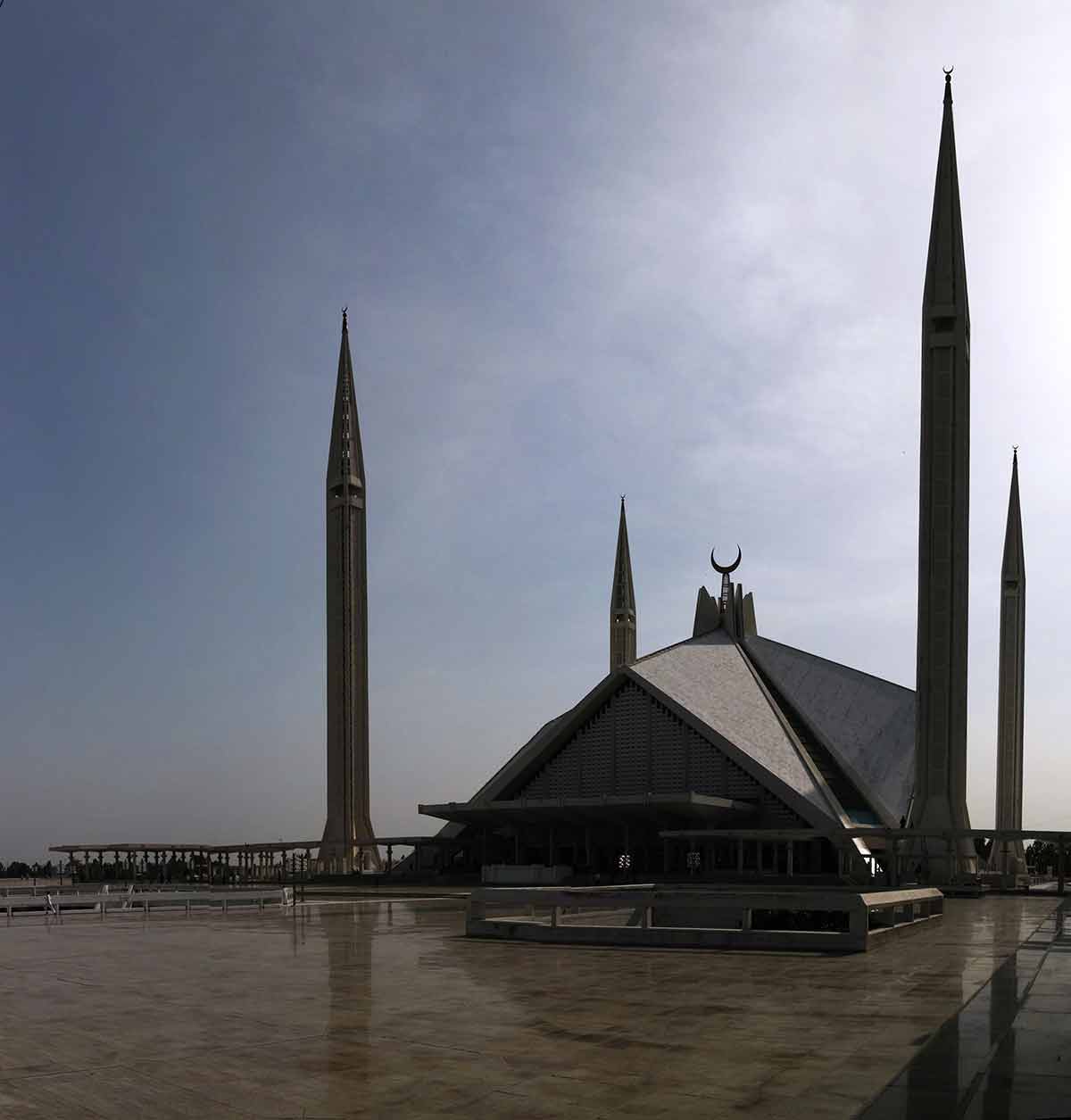
Nestled in the foothills of Margalla Hills in Pakistan’s capital city of Islamabad, Faisal Mosque is the largest mosque within South Asia and the sixth-largest in the world.
A Turkish architect Vedat Dalokay designed the mosque like a Bedouin tent.
The mosque is named after Saudi King Faisal bin Abdul-Aziz, who suggested the idea of this mosque and financed its construction.
The structure covers 22 acres (9 ha), with a massive prayer hall big enough for 100,000 worshippers and four 288 ft (88 m)-high minarets on its sides.
Near the prayer room are the main lecture hall, a library, a restaurant and a café.
3- Deosai National Park
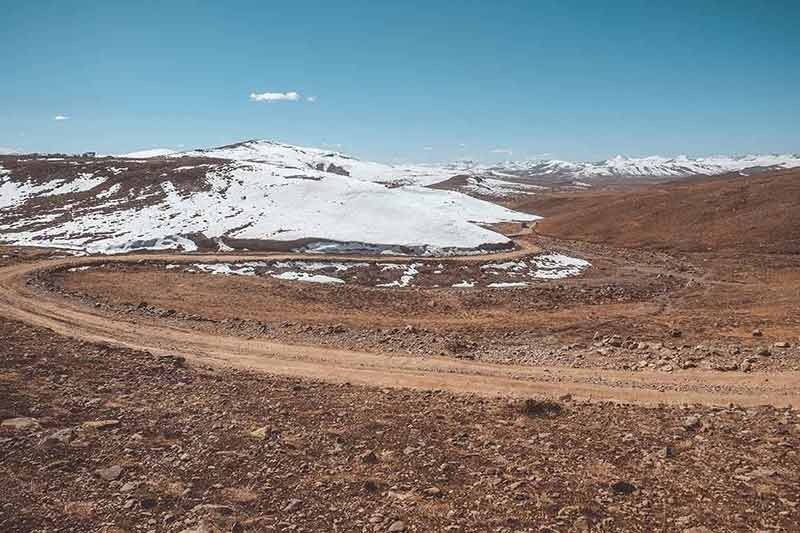
Located between Skardu, Astore, and Kharmang in Gilgit Baltistan, Deosai National Park is a high-altitude plateau and national park with mountains, hills, plains, streams, rivers and lakes.
It’s the second-highest plateau in the world at an average elevation of 13,497 ft (4100 m) above sea level.
The park was established in 1993 to protect endangered species from hunters.
Renowned for its rich flora and fauna, the plains are covered in colourful wildflowers that attract an army of butterflies.
The park is home to the Himalayan wolf and marmot, snow leopards, screw-horned goats, Himalayan brown bear, lammergeiers (a rare vulture breed), and over 124 kinds of native and migratory birds.
More Landmarks in Asia:
4- Ranikot Fort
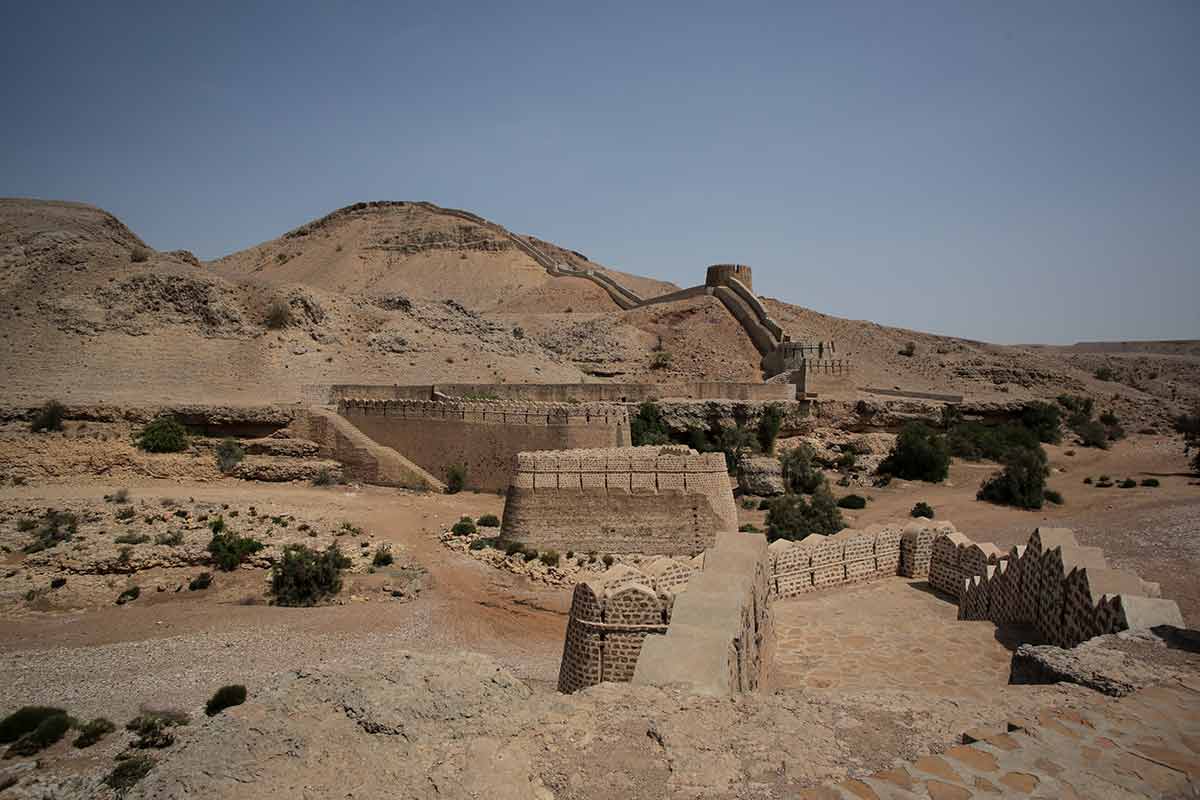
Ranikot Fort is a 17th-century historical landmark in Pakistan located within Sindh’s Kirthar National Park.
The park is the country’s second-largest national park and the fort is enormous, with a circumference of about 20 miles (32 km).
In Pakistan, the ramparts are compared to the Great Wall of China and are known as the Great Wall of Sindh.
In 1993, the site was nominated by the Pakistan National Commission for UNESCO World Heritage Sites.
This fort’s exact origin and architects remain unknown, unlike other historical sites.
The fort was constructed with stone and lime mortar in a zig-zag pattern, with four entry gates forming a rhomboid shape.
Today, you can climb the gates to admire the incredible views of the surroundings from the fort’s top.
5- Baltit Fort
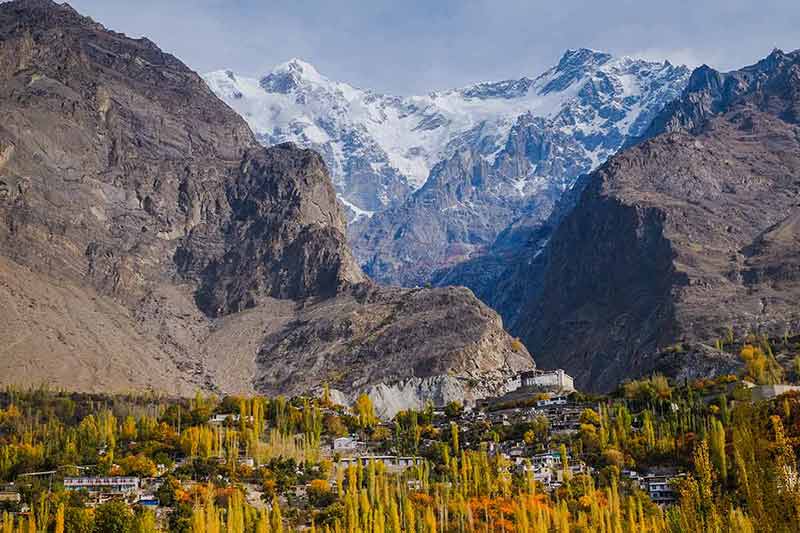
Located within the Hunza and Nager Valleys near the Karimabad in Gilgit-Baltistan, Baltit Fort is a 700-year-old historical structure overlooking the valley settlements it was made to guard.
The fort was the seat of the Mirs, who ruled until 1954.
While it has lost its defensive role, the Baltit Fort remains a Pakistan landmark representing the region’s history and culture.
It has been reconstructed to its earlier glory and operates as a museum.
Many rooms exhibit old images, clothing, furnishings and utensils used by locals.
Visitors can also take a tour with a local guide and use the library.
6- Khewra Salt Mine
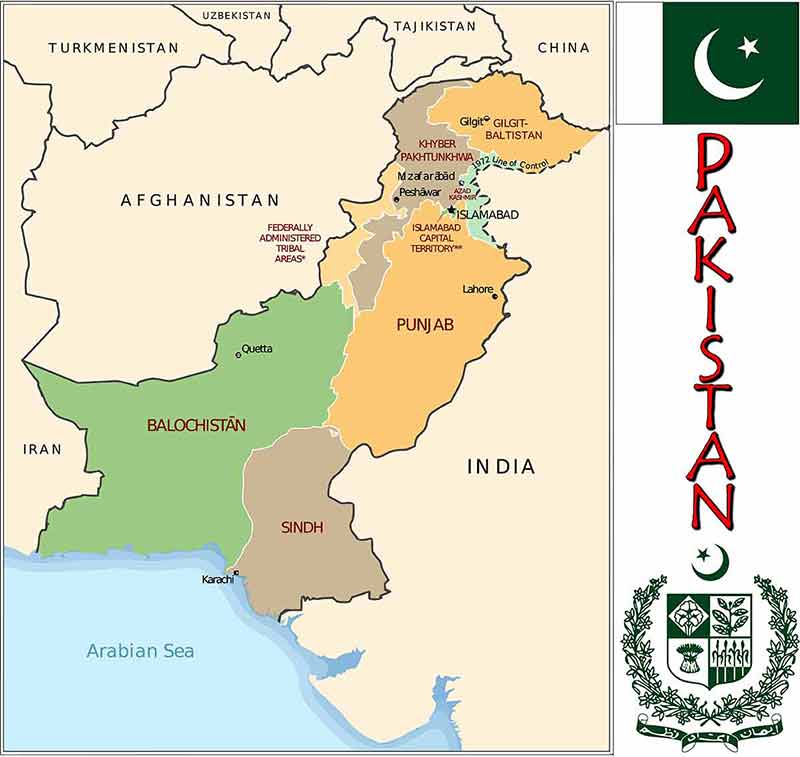
Halfway between Lahore and Islamabad, Khewra Salt Mine is Pakistan’s oldest and biggest salt mine and the second-largest in the world.
Its history dates back to its discovery by Alexander the Great’s troops in 320 BC, but the trading began in the Mughal era.
The mine produces over 350,000 tons per annum of nearly 99% pure halite.
The total salt reserves in the mine are estimated to be between 82 to 600 million tons.
Many famous landmarks in Pakistan and beyond were built using salt, including the Badshahi Mosque, the Mall Road of Murree, the Great Wall of China, Minar-e-Pakistan, a 25-ft-long Salt Bridge called the Islamic Pul-Saraat.
The mine also has the world’s only post office built out of salt for the use of workers.
Today, it is a major tourist destination attracting 250,000 visitors each year.
7- Khaplu Palace
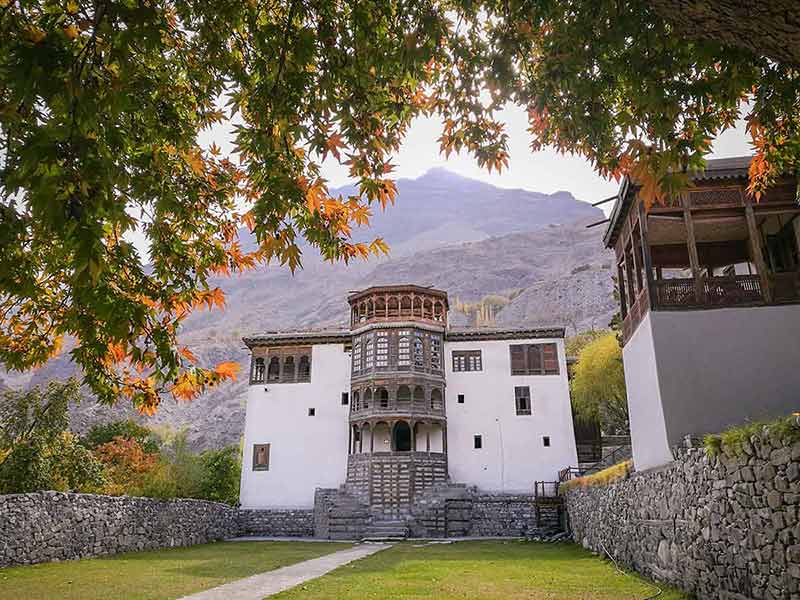
Also called Yabgo Khar, Khaplu Palace is an ancient fort and palace in Khaplu – a city in Gilgit-Baltistan.
It is an architectural heritage site, a tourist attraction and a historic landmark of Pakistan.
The palace served as the royal residence for the Raja of Khaplu and was constructed in the 19th century to replace an old fort nearby.
Several craftsmen were involved in its construction, and the palace’s structure has Kashmiri, Tibetan, Balti, Ladakhi, and Central Asian influences.
There are four floors built with clay, timber, mud bricks and soil mortar,.
It has a carved wooden gate from Skardu and many rooms overlooking the Karakoram Mountain range and lawns around the palace.
Today, it has a hotel and a museum depicting the history and culture of Baltistan.
For more amazing European Landmarks, read:
- 30 Spain Landmarks
- 20 Switzerland Landmarks
- 22 Germany Landmarks
- 35 London Landmarks
- 30 France Landmarks
- 20 Italy Landmarks
- 20 Greece Landmarks
- 20 Russia Landmarks
- 20 Scotland Landmarks
- 20 Ireland Landmarks
- 21 Wales Landmarks
- 20 Turkey Landmarks
- 20 England Landmarks
- 20 Hungary Landmarks
- 21 Romania Landmarks
- 20 Ukraine Landmarks
- 20 Athens Landmarks
- 20 Rome Landmarks
- 20 England Landmarks
- 20 Portugal Landmarks
- 20 Poland Landmarks
- 20 Iceland Landmarks
- 20 Bulgaria Landmarks
- 21 Croatia Landmarks
- 20 Bulgaria Landmarks
- 20 Austria Landmarks
- 21 Finland Landmarks
- 20 Sweden Landmarks
- 20 Denmark Landmarks
- 20 Belgium Landmarks
- 20 Netherlands Landmarks
- 20 Barcelona Landmarks
- 21 Czech Republic Landmarks
- 20 Landmarks in Paris
- 20 Landmarks in Liverpool
- 10 Istanbul Landmarks
8- Faisalabad Clock Tower
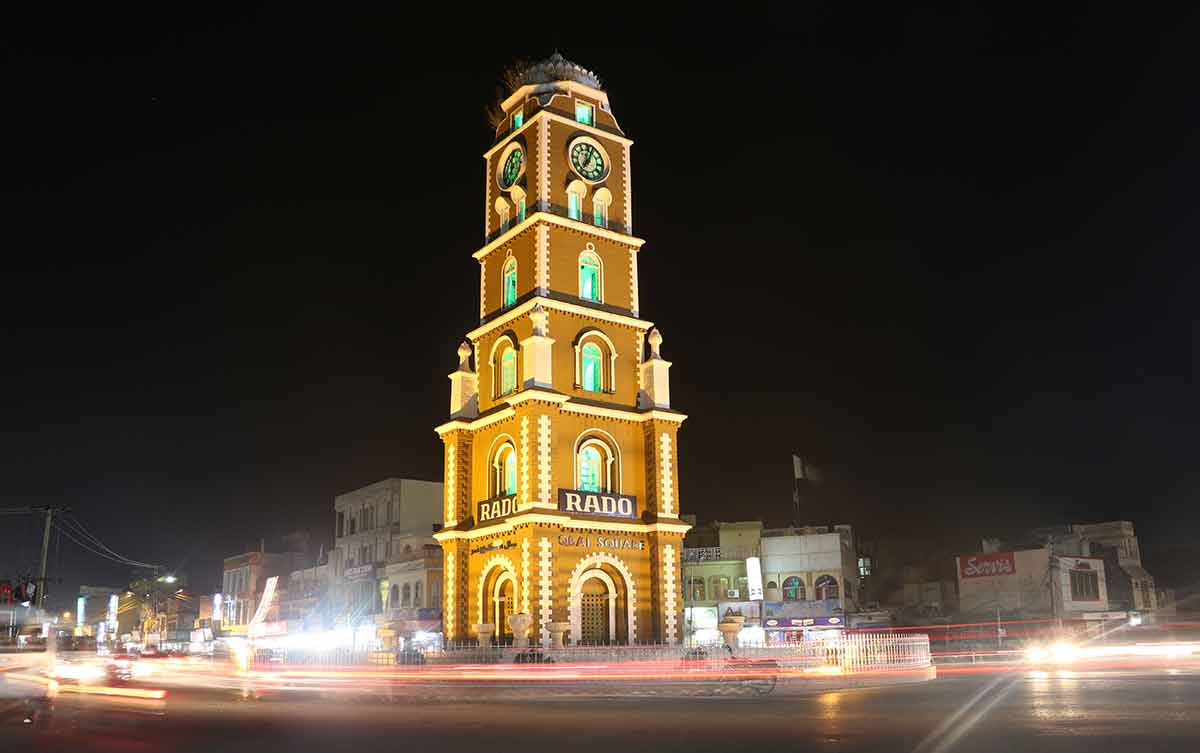
The Clock Tower, also called Ghanta Ghar, is one of Faisalabad’s oldest monuments, still standing in its original condition from the era of the British Raj.
It provides a platform for political activities as all parties like to hold demos in front of it.
British Lieutenant Governor of Punjab Sir Charles Riwaz and famous local landlord from Mian Family of Abdullahpur laid its foundation in 1905.
The location of the clock tower is in the centre of the eight markets that, from a bird’s-eye view, looks like the Union Jack flag of the UK.
Many mosques, temples, and churches are situated around the Clock Tower, reflecting the harmony of inter-religious communities.
9- Pakistan Monument
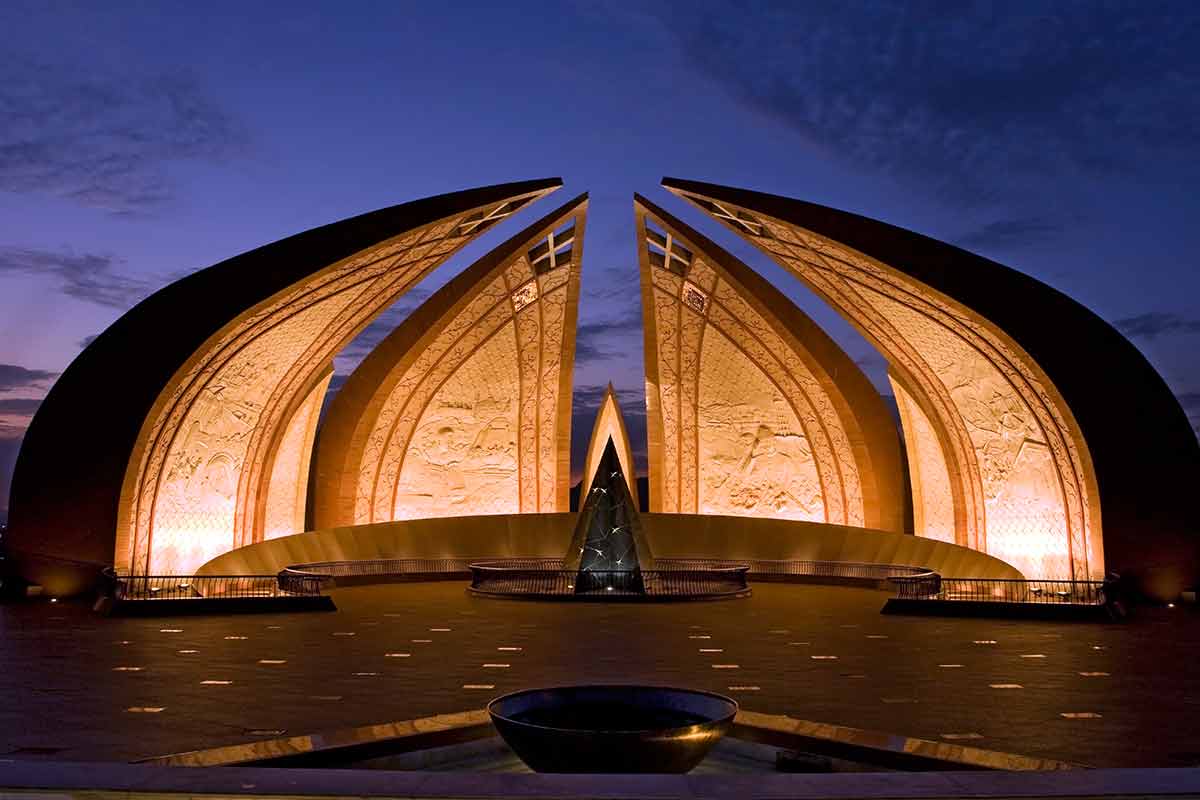
Nestled in the Shakarparian Hills in Islamabad, Pakistan Monument is an architectural marvel built in 2010.
The giant structure of a petal-closed flower represents Pakistan’s four provinces and three territories.
It depicts ancient civilisations, the freedom struggle and foundation of Pakistan, and its significant achievements.
Four pillars display Quaid-e-Azam’s motto Unity, Faith, Discipline in English and Urdu.
A large fountain emerges from the middle of the monument, which makes a pleasant sight for the visitors.
The site also houses the Pakistan Monument Museum, which contains numerous paintings, wax statues of historical figures, and other significant images.
The collection gives a deeper understanding of Islam, the Mughal-era, pre-partition history to the Pakistan movement, and many important events that led to the subcontinent partition.
In addition to old national records, historical speeches, and old manuscripts, there is also a conference hall and an auditorium in the museum.
10- Bahadurabad Chowrangi
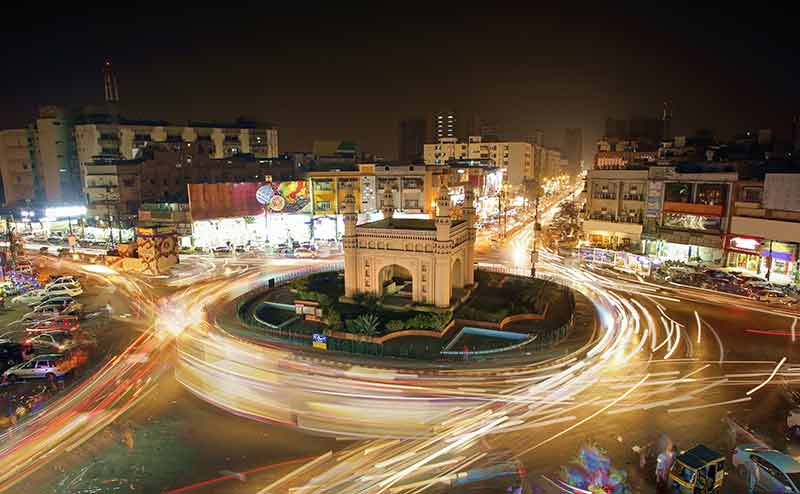
Bahadurabad is a neighbourhood of Gulshan Town in Karachi and home to a replica of the Charminar monument in Hyderabad, India.
Charminar Bahadurabad Chowrangi was built in 2007 and is now a popular monument in Pakistan.
This structure has been featured in the World’s Most Beautiful Roundabouts list by a UK-based Roundabout Appreciation Society.
It also earned the sixth position in the list of 12 Roundabouts from All Over The World in 2015.
11- Minar-e-Pakistan
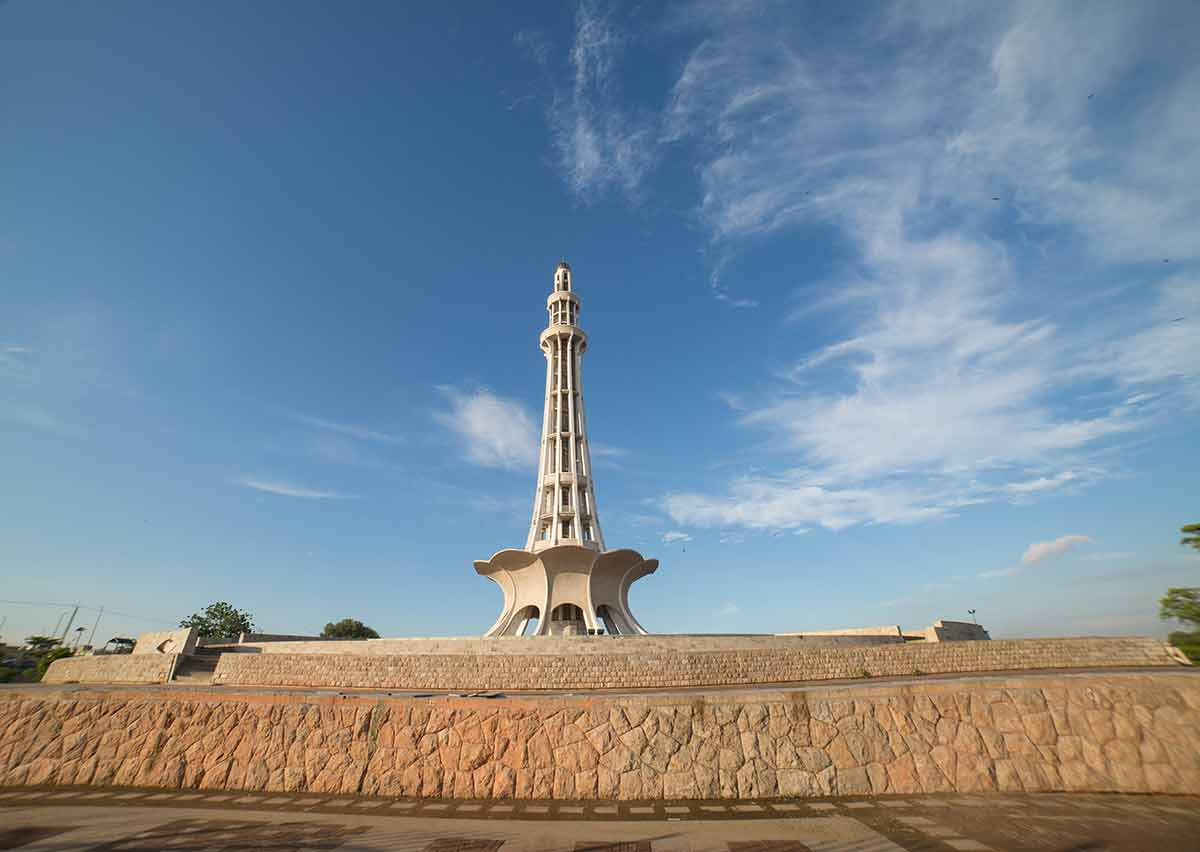
Also called the Tower of Pakistan, Minar-e-Pakistan is a historical monument located in the centre of Lahore’s Greater Iqbal Park.
The tower was constructed during the 1960s when the All-India Muslim League passed the Pakistan Resolution in 1940.
It is a 203 ft (62 m) minaret with four platforms laid out in a star shape.
The minaret’s base transforms into massive petals, which are 30 ft (9 m) high and have inscriptions.
The 99 names of Allah, Quran verses, Pakistan National Anthem in Urdu, Arabic, Bengali, and English languages, and speeches of Quaid-e-Azam are inscribed on it.
You may like to join this Lahore Full Day City Guided Tour.
12- Shangrila Resort
Across the bridge over the River Indus is Shangrila in Skardu, the central valley of Gilgit-Baltistan.
Shangrila Resort Hotel is the highlight of this area and opened in 1983 as the first-ever resort established in the northern regions for tourism.
The site got its name Heaven on Earth due to its heavenly beauty, incredible views, and peaceful ambience.
This scenic resort was founded by the first commander of the Northern Scouts, Brig. Muhammad Aslam Khan.
The tourism landmark in Pakistan has several restaurants, cafes and a mini zoo with an impressive collection of birds.
There’s a boating option on the natural spring water lake, trekking spots, and a viewpoint offering breathtaking views of the mountains.
Also read:
- 20 USA Landmarks
- 23 Canada Landmarks
- 22 Ohio Landmarks
- 21 Arizona Landmarks
- 21 Minnesota Landmarks
- 21 Oregon Landmarks
- 21 Illinois Landmarks
- 21 Colorado Landmarks
- 21 Georgia Landmarks
- 21 Michigan Landmarks
- 23 Los Angeles Landmarks
- 21 Washington Landmarks
- 21 Maryland Landmarks
- 20 Manitoba Landmarks
- 20 Kansas Landmarks
- 21 New Mexico Landmarks
- 20 Idaho Landmarks
- 20 Montana Landmarks
- 20 Oklahoma Landmarks
- 21 Wisconsin Landmarks
- 20 Tennessee Landmarks
- 21 Iowa Landmarks
- 20 Alaska Landmarks
- 20 Miami Landmarks
- 21 West Virginia Landmarks
- 21 Kentucky Landmarks
- 20 Louisiana Landmarks
- 21 Arkansas Landmarks
- 20 Cincinnati Landmarks
- 20 San Antonio Landmarks
- 25 Indiana Landmarks
- 21 New York Landmarks
- 20 Texas Landmarks
- 21 Boston Landmarks
- 20 Florida Landmarks
- 20 Hawaii Landmarks
- 5 South Dakota Landmarks
- 21 Pennsylvania Landmarks
- 23 New Jersey Landmarks
- 21 Virginia Landmarks
- 21 North Carolina Landmarks
- 21 Utah Landmarks
- 21 Nevada Landmarks
- 20 Massachusetts Landmarks
- 20 Washington DC Landmarks
- 20 Vermont Landmarks
- 20 Nebraska Landmarks
- 20 North Dakota Landmarks
- 21 Missouri Landmarks
- 20 Rhode Island Landmarks
- 21 Maine Landmarks
- 21 Connecticut Landmarks
- 20 San Diego Landmarks
- 20 Landmarks In South Carolina
- 20 Mississippi Landmarks
- 20 Las Vegas Landmarks
- 20 Dallas Landmarks
- 20 Houston Landmarks
- 20 Seattle Landmarks
13- Mohenjo-Daro
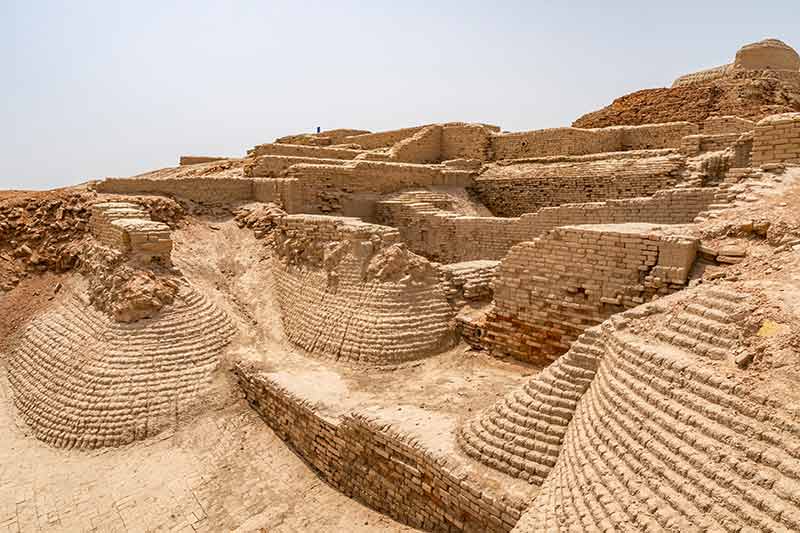
Mohenjo-Daro (Mound of the Dead Men) is one of the most significant settlements of the Indus Valley Civilization and among the earliest major cities in the world, existing at the same time as the civilisations of ancient Egypt, Minoan Crete, and Mesopotamia.
It is an ancient city of mounds and ruins sitting on an elevated ground in the modern-day Larkana district of Sindh province.
The city was established around 2500 BCE and abandoned during the 19th century BCE.
It was not rediscovered until the 1920s when several excavations occurred.
In 1980, the site became a UNESCO World Heritage Site.
Archaeologists believe the population here was 50,000 at its peak, and it had sophisticated civil engineering and urban planning.
14- Noor Mahal
Noor Mahal, or Noor Palace, is a popular tourist attraction in Bahawalpur – the 12th-largest city of Pakistan.
This magnificent structure was constructed by the fifth ruler of Bahawalpur State, Nawab Sir Muhammad Sadiq.
The palace covers a vast area of 44,600 sq ft (4143 sq m), having a total of 32 rooms, including 14 rooms in the basement.
The most striking feature is the use of six verandas and five domes in a traditional style.
Much of its furniture was imported from England and Italy.
The palace houses many objects like swords, coins, currency notes and a piano used by the Nawabs.
Also, there is a long wall that contains portraits of the Nawabs.
While this 19th-century building looks glorious throughout the day, its view at night when the lights are turned on is even more magnificent.
15- Wazir Khan Mosque
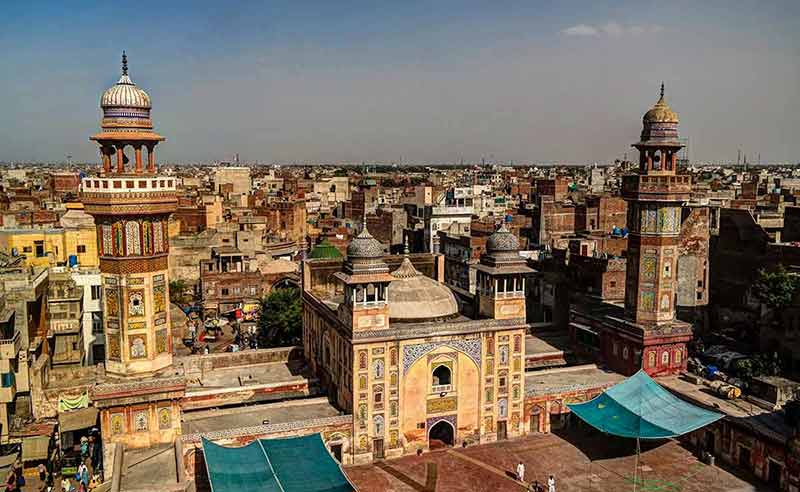
Old Lahore, or the Walled City of Lahore, is a historical area of Lahore with 13 gates, and you can reach Wazir Khan Mosque through one of these gates, the Delhi Gate.
It is a 17th-century mosque commissioned during the rule of the Mughal Emperor Shah Jahan.
The mosque’s main prayer hall is embellished with Mughal frescoes and has five sections aligned into the single long aisle from north to south.
The middle section is covered by a 31 ft (9.4m)-high dome resting upon four arches that forms a square pavilion, while other areas are topped by domes built during the earlier Lodhi dynasty.
The walls of the prayer hall have calligraphy in both Arabic and Persian.
This majestic mosque is also known for being the first to have a 22-shop bazaar included in the original design.
Discover more Famous World Landmarks:
- 25 Australian Landmarks
- 20 New Zealand Landmarks
- 20 African Landmarks
- 21 Egyptian Landmarks
- 20 Jordan Landmarks
- 10 Tasmanian Landmarks
- 20 Antarctica Landmarks
16- Lahore Fort
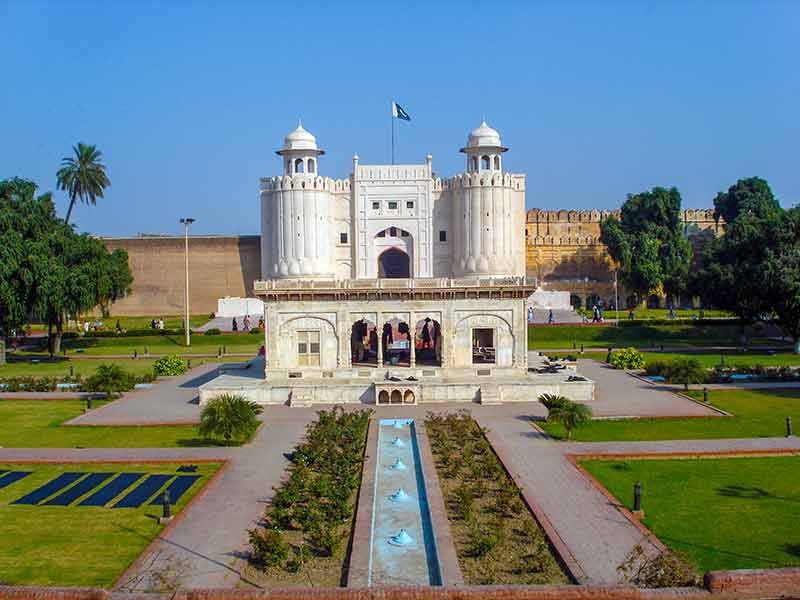
Locally referred to as Shahi Qila, Lahore Fort is an enormous fortification covering 49 acres (20 ha).
This massive complex was built by the Mughal Emperor Akbar, later modified by Jehangir in 1618.
Impressive buildings within the fort include private and public audience halls, Naulakha (a lavishly decorated pavilion), Sheesh Mahal (an ornate palace of mirrors decorated with glass mirrors), Khawabgarh-i-Jehangir (Jehangir’s sleeping quarters) and Moti Masjid, the Pearl Mosque for the ladies of the royal household.
There are also three small museums.
The Armory Gallery has displays of weapons like pistols, swords and spears, while the Sikh Gallery has rare oil paintings, and the Mughal Gallery exhibits old manuscripts, miniature paintings, models and calligraphy.
17- Attabad Lake
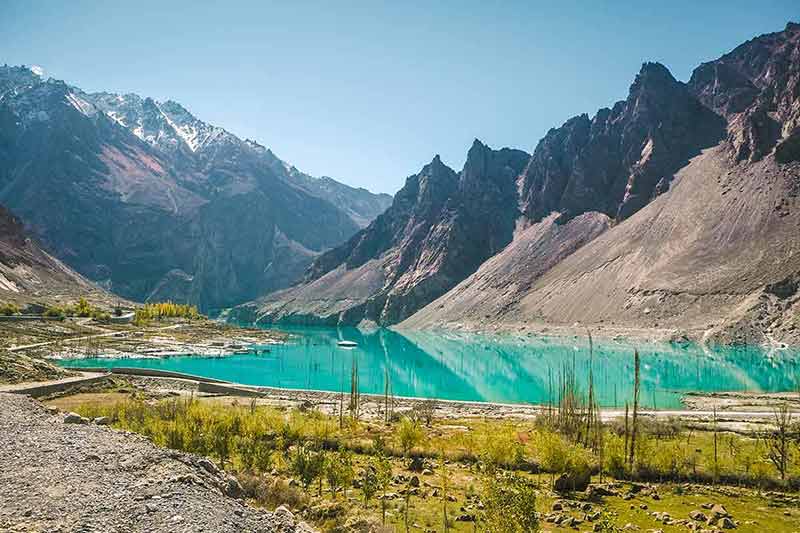
In the Gojal district of Hunza Valley, Gilgit-Baltistan, Attabad Lake is a gorgeous lake surrounded by the Karakoram Mountains.
The lake formed in 2010 after a landslide at the village by the Hunza River stopped the river from flowing.
The natural disaster displaced thousands of villagers, and 20 people lost their lives.
The lake has chilly turquoise water flowing from nearby glaciers and the Hunza River.
Recreational activities take place on and around Attabad Lake, including boating, fishing and jet skiing.
Due to the rise in tourism, more and more campsites, hotels, and guesthouses have sprung up near the lake.
18- Frere Hall
Frere Hall is a 19th-century building in Karachi, built to commemorate Sir Bartle Frere’s commendable management when he was called to the Viceroy’s Council.
Originally, it served as the Town Hall with regular public meetings and theatrical performances.
After the country’s independence, the hall’s library was renamed Liaquat National Library after Liaquat Ali Khan, first Prime Minister of Pakistan.
Today, it’s an exhibition space and one of the city’s most extensive libraries, housing a collection of over 70,000 books (rare and hand-written manuscripts).
The hall has two lawns on its sides called Jinnah Gardens.
Also, it has many stone busts, including that of King Edward VII and oil paintings by Sir Charles Pritchard, who was the Sindh Commissioner.
Now, it is open to the public and is among the most important tourist attractions in the city.
19- Katas Raj Temples
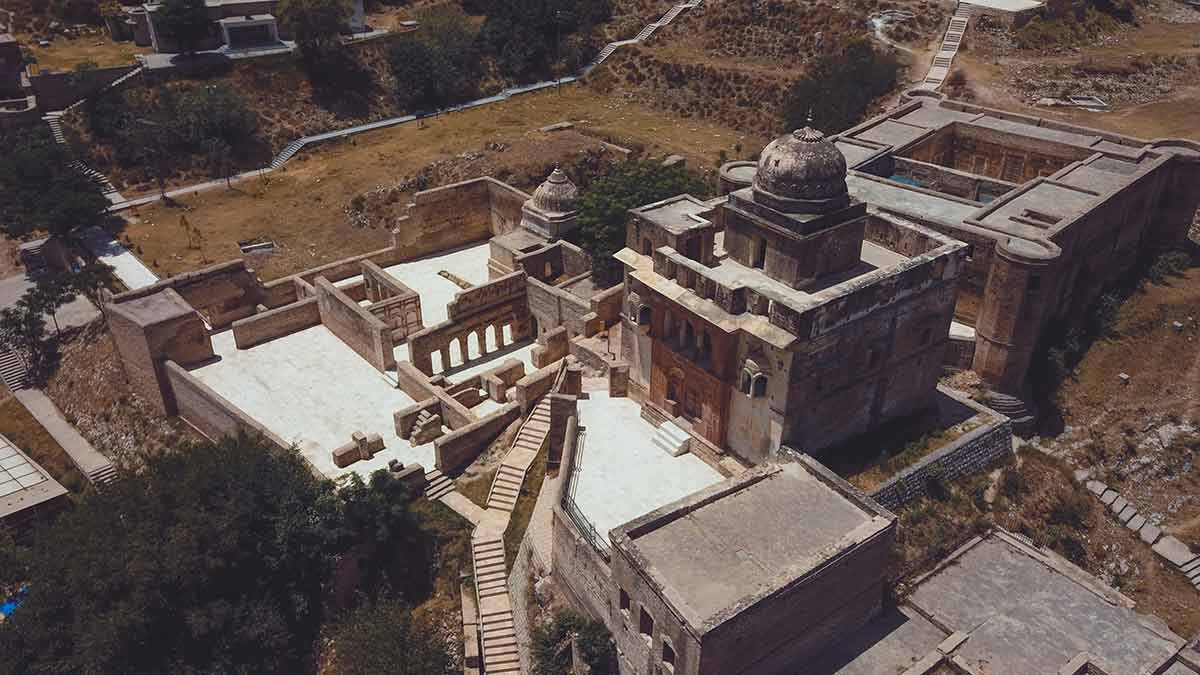
Katas is one of the oldest Hindu religious sites in Pakistan and a conglomeration of seven temples, remains of a Buddhist stupa, medieval structures and mansions laid around a natural pond.
According to legend, the pond was formed by the tears of Lord Shiva when he cried in the memory of his late wife, Sati.
Katas Raj Temples is near Chakwal in Punjab province, about 100 km away from another prominent Hindu pilgrimage destination, the Tilla Jogian Complex.
It is a sacred site for Hindus and the Sikh community; the founder of the Sikh faith, Guru Nanak, visited this site often.
20- Empress Market
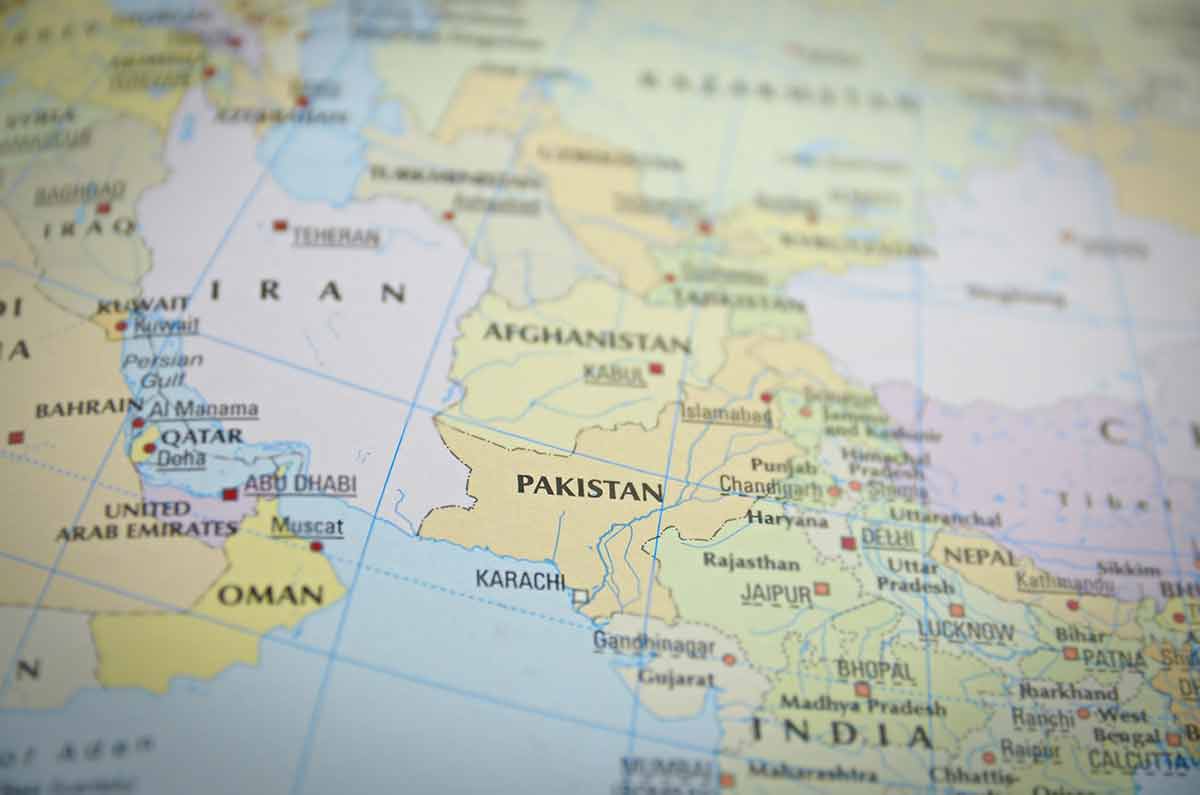
Empress Market is a famous marketplace in the Saddar town of Karachi and a historical Pakistan landmark.
It was built during the 1880s and was named to commemorate Queen Victoria, Empress of India.
The structure has an Indo-Gothic style, with four galleries designed like those in the Mughal era, and can accommodate up to 280 shops.
Commodities sold here include everything from fruit and vegetables to textiles, stationery, and Karachi’s largest pet shop.
Plan Your Trip

Rent A Car – Find the best car rental rates at Discover Cars. They compare car hire companies to provide you with the best deal right now.

Find A Hotel – If you’re curious about this article and are looking for somewhere to stay, take a look at these amazing hotels.
